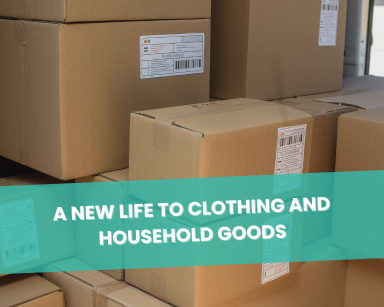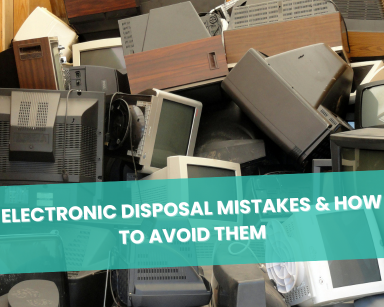Reimagine Waste: The Environmental Boost of Beneficial Reuse
E-commerce, spearheaded by titans like Amazon, has undeniably reshaped our shopping habits. But as we embrace this digital revolution, the alarming consequence of overstock waste looms large. How often do sellers truly grasp the magnitude of their decision to liquidate Amazon inventory? As our planet gasps for sustainable alternatives, the concept of Beneficial Reuse emerges as a promising beacon.
Table of Contents
What’s the Issue with Traditional Liquidation?
The digital age of e-commerce has accelerated the scale of consumerism. Sellers frequently choose to liquidate Amazon inventory, often overlooking the larger environmental implications. This has led to a surge in discarded goods, often at the expense of the environment. With millions of items returned annually, the burden on landfills is staggering.
The True Cost of Overstock to the Planet
- Landfills-The Silent Sufferer: Each discarded item adds weight to our landfills, releasing greenhouse gases as they degrade, impacting our air and soil.
- Amazon Overstock Trail: Think of it like breadcrumbs. Unsold items from Amazon often land in places they shouldn’t. And the environmental cost? Steeper than any price tag.
- Wasted Resources: Behind every product lies a tale of resources—water, raw materials, labor, and energy. When products lie unsold or discarded, it’s not just the final item that’s wasted, but the sum of its parts. For Amazon sellers, understanding this chain of waste underscores the importance of sustainable solutions.
Enter Beneficial Reuse: A Greener Strategy for Overstock
The concept of “waste not, want not” gets a modern twist with beneficial reuse. Overstock doesn’t have to be a burden. In fact, when seen through the lens of sustainability, it presents a golden opportunity. Here, excess inventory becomes an asset, not a liability. Just as one person’s trash is another’s treasure, Amazon’s excess inventory can be repurposed in meaningful ways. Beneficial reuse pushes us to think beyond traditional frameworks and perceive overstock as a valuable resource, waiting to be harnessed.
Beneficial Reuse vs. Liquidation: The Essential Differences
- Community and Environment: Beneficial reuse doesn’t just aim to reduce waste; it aspires to nourish communities and nurture the planet.
- Profit Meets Purpose: The wonderful duality of beneficial reuse is its ability to serve sellers’ wallets while serving a greater good.
Lesser-known Environmental Benefits
Beyond reducing landfill waste, beneficial reuse can lower energy consumption. Repurposing items means less manufacturing, which in turn means fewer resources are spent creating something new. Every item reused is one less item produced, leading to a decrease in the carbon footprint associated with production.
Lessons from Happen Ventures: Tackling Amazon Overstock Waste
Happen Ventures stands as a beacon, illuminating the potential embedded in ‘waste’. Our approach isn’t just about minimizing the landfill load; it’s about redefining the very notion of waste. By tapping into the potential of unsold Amazon items, Happen Ventures showcases a model where excess inventory can be rerouted to serve meaningful purposes, forging an innovative path for other sellers to emulate.
Practical Steps for Amazon Sellers
Harnessing the potential of unsold or returned Amazon inventory requires meticulous planning and the right partnerships.
- Returns Donation Strategy: Taking a page from Happen Ventures, consider partnering with a dedicated returns management service. This not only streamlines the process but also ensures that items get donated to the right charities, boosting both community goodwill and the ESG score of your business.
- Overstock Reallocation: Like handling chemicals or hazardous materials, surplus inventory demands thoughtful disposal. Instead of treating it as waste, think of it as resources yet to find their rightful place. This might be through donations or even resale in markets where the product is still in demand.
- Collaboration with Experts: Work with firms that specialize in the proper evaluation of products for donations. This ensures that charities receive items that are useful and meet their specific requirements, while people handle potentially hazardous or unsuitable items appropriately.
- Transparency with Consumers: Share the journey of returned products with your customers. This not only educates them about your sustainable practices but also instills trust and loyalty, portraying your brand as one that cares for the environment and community.
The Tangible Benefits of Beneficial Reuse for Amazon Sellers
With global attention turning towards sustainable practices, Amazon sellers can position themselves at the forefront of this movement. It’s more than just deciding how to manage excess amazon inventory; it’s about integrating practices that build brand integrity, foster community goodwill, and reduce ecological footprints. Embracing beneficial reuse is not just a strategy—it’s an evolution in perspective.
Re-envisioning the Future of Overstock Management
The future of overstock management goes beyond just reducing waste; it’s about creating a wave of positive impact. As companies like Happen Ventures have showcased, donating overstock can aid local communities while simultaneously boosting a company’s Environmental, Social, and Governance (ESG) score.
Leveraging Tax Benefits
Donating returned merchandise can lead to significant tax deductions. By keeping track of donated goods, businesses can offset some of their operational costs, making the beneficial reuse model financially viable.
A Shift Towards Conscious Consumerism
As more businesses adopt beneficial reuse, consumers become more aware of sustainable business practices. This can catalyze a positive feedback loop, where sellers adopting these measures gain a competitive edge, and buyers actively seek out environmentally responsible sellers.
Conclusion:
Rethinking strategies is often the first step toward transformative change. Amazon sellers stand on the precipice of a revolution. By choosing to manage excess amazon inventory through beneficial reuse, they’re not just opting for profitability but are paving the way for a sustainable, community-centric e-commerce future.










